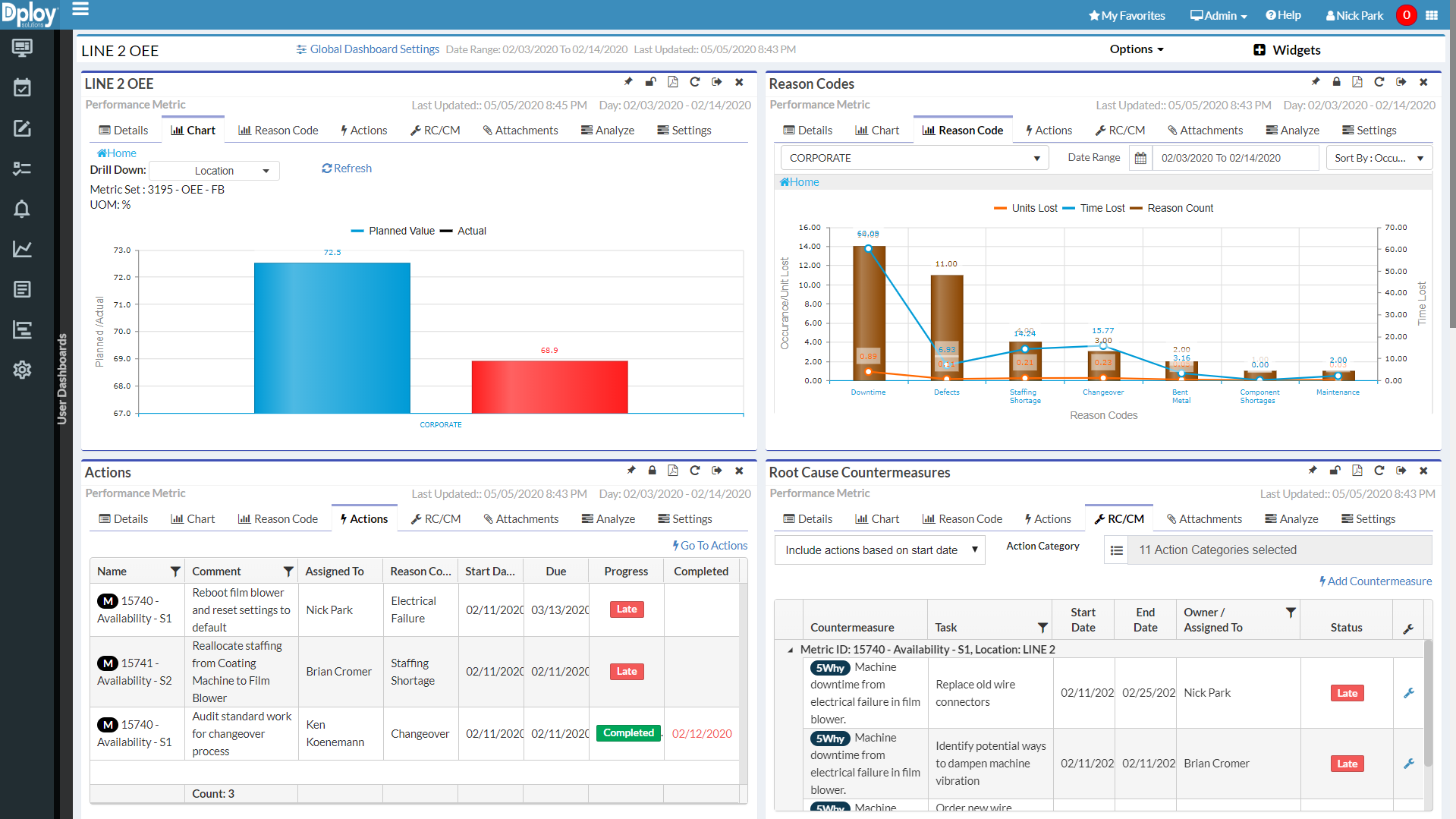Adopt a Lean Approach to Extract Real Business Value from Your Connected Machines.
Right now, the machines on your shop floor are producing thousands and thousands of data points. Some of that data holds the secrets to your performance problems and the keys to untapped efficiency gains. Thanks to Industry 4.0 and IIoT, it’s now possible to easily access that data, as much of it as you want, as often as you want.
But, then what?
As one manufacturing executive quipped in our recent Operations Executive Roundtable, “Digitalisation for the sake of digitalisation doesn’t help you at all. If the data going into that process isn’t good data, you get garbage in, and garbage out. You have to be able to sort the data down to what is actionable and then have some way to implement those actions.”
Brava, we say! We couldn’t agree more. And it’s why were so excited about the emergence of Lean 4.0 philosophy.
A lean approach brings context and purpose to your IIoT data.
IIoT data on its own can and does deliver valuable knowledge. For example, it can tell you if a machine is about to break down so you can take action to prevent downtime. But adding lean to the mix takes it to another level, enabling you to improve process capabilities and performance long-term.
The key to Lean 4.0 is to use the data specifically to identify the nuanced inefficiencies and waste hiding within the inner workings of manufacturing processes and related to variables like cycle time variances and equipment parameters. By tying the IIoT data directly to KPIs like throughput, quality, and cost per unit, you can quantify the business impact of that waste and then set about systemically tackling the problems and perfecting your processes.
For most manufactures, this type of strategic Lean 4.0 approach can lead to performance, quality, and efficiency gains of as much as 25%, which can have a profound impact on both the top and bottom lines.
The problem is, too many manufacturers are just adding more sensors. They’re getting lost in the data, and they are not generating the results they expect and want.
4 keys to doing IIoT right.
If you’re looking to make your connected factory floor a truly invaluable business asset, the answer is not more sensors. Look beyond the data you can collect and start thinking strategically about what you should collect, and what you will ultimately do with that data, to usher in long-term performance improvements.
Here’s a roadmap that can help you make the transition:
1. Adopt a lean mindset. In TBM’s view, the impetus behind any Industry 4.0 initiative should be business performance improvement. Very often, OT data is the key to pinpointing the root causes of the quality, production, delivery, and cost issues plaguing your business and holding you back from hitting your KPI goals. By approaching IIoT as a way to gain insights that help remove specific areas of waste, you can set the stage for taking lean to the next level in your organisation.
2. Don’t just collect the data. Visualise it within the context of metrics that matter. Programmable logic controllers (PLCs) are continuously gathering equipment parameter data from your machines. Seeing that data in real time and in relation to critical performance metrics gives you the insights you need to make the right adjustments and changes for optimal performance.
A digitised daily management system can help enable this visibility by displaying the data in dashboards and interactive charts for all to see. Team members and decision makers know right away where problems exist and can then set about proactively addressing issues to optimise operations.

Dploy Solutions Factory Floor Connectivity digital manufacturing software puts real-time IIoT data and insights at the fingertips of your decision makers.
3. Make more meaningful connections through the power of analytics. Seeing IIoT data within the context of your KPIs is one thing. Getting to the root causes of misses and problems is the next step.
When a powerful analytics engine is baked into the digital daily management solution, it helps identify meaningful correlations between variables and equipment settings (such as speed, temperature, pressure, flow rate, and material thickness) and your critical operational performance metrics including throughput, quality, and productivity. You can then determine if, how, and to what degree your equipment settings affect your outcomes.
For example, with Dploy Solutions Business Analytics, you can test hypotheses and view correlations between different metrics, can identify patterns, understand trends, and pinpoint root causes of performance issues. Watch the two-minute video below to see how it works.
4. Prove and move. When you know the performance problems you want to solve, and you have the data visualisation and analytics capabilities you need to understand correlations between variables and outcomes, the remaining piece of the puzzle is a controlled or methodical approach to identifying optimal processes.
We’re currently helping an industrial high-performance fabric manufacturer address a material variance problem that’s adding up to several hundred thousand dollars of loss each month. Through a design of experiments approach, we will collect and analyse data from critical machines one at a time. This systematic approach is the key to pinpointing the specific influencing factors contributing to the performance problems without getting overwhelmed by too much data that can hide the key insights. The plan is to continue until all critical areas of the process are explored and perfected, ultimately creating confidence that the process is as efficient and effective as possible with all waste eliminated at the source.
Remember, more data isn’t always the answer.
As with any technology, just because you can put IIoT sensors on everything doesn’t mean you should. Marrying lean with IIoT for a true Lean 4.0 approach is fundamental to getting the real value out of your Industry 4.0 journey. While it can feel like a slower, more tedious process, time and again our clients find that it’s the key to getting better business results faster and more affordably by keeping the focus on what truly moves the needle for the business.





